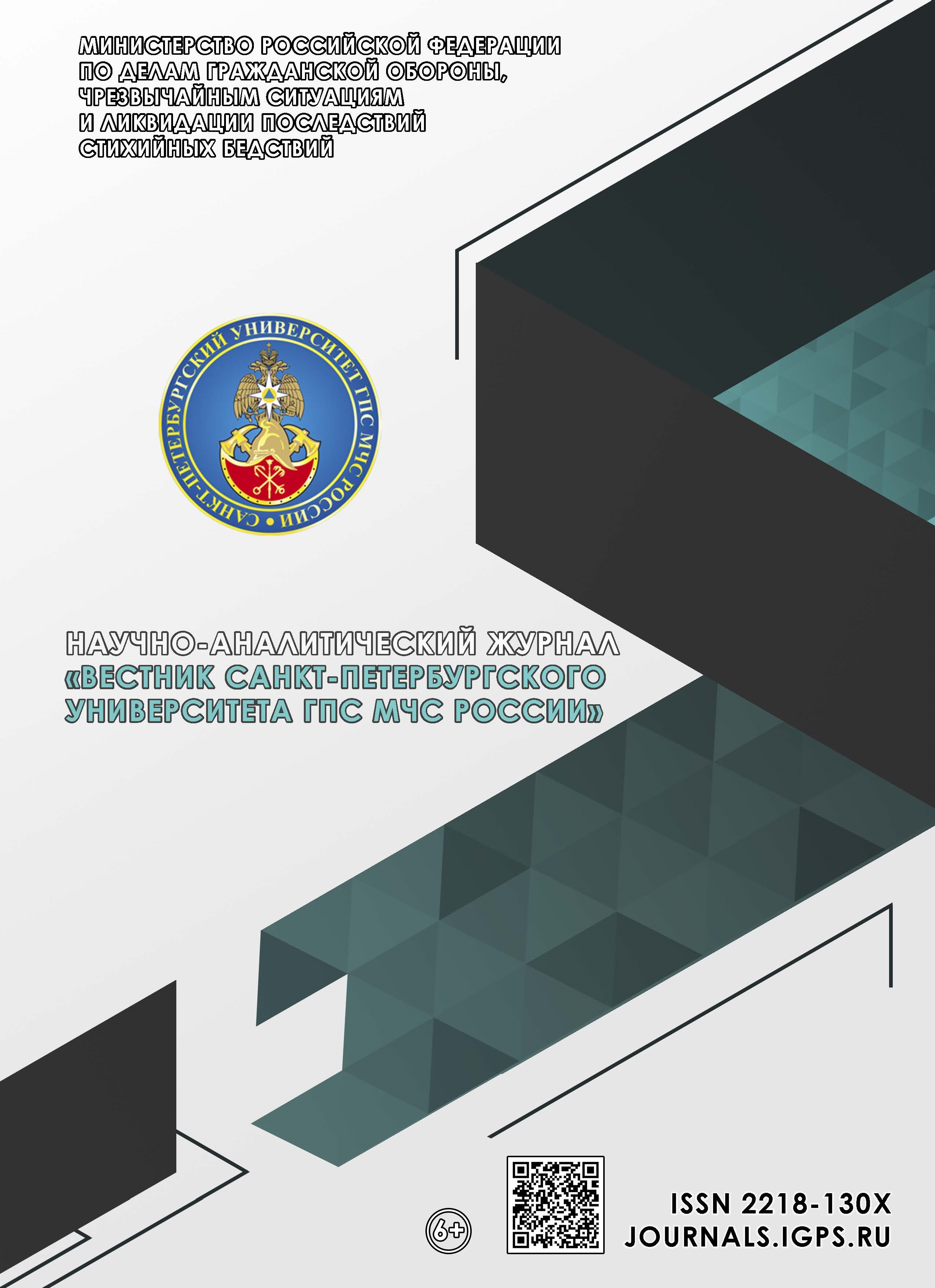Russian Federation
Russian Federation
Russian Federation
Indoor explosions pose a serious threat to human life and health, as well as cause significant material losses. Therefore, assessing the excess pressure of an explosion is an important task for ensuring safety and developing appropriate prevention and protection measures. This study is relevant in light of the increased interest in safety and explosion prevention. The study will make it possible to assess how the coefficient, which takes into account the leakiness of the room, affects the excess pressure of the explosion and develop recommendations for creating safer indoor conditions. This is of great importance for industrial enterprises, where the risk of explosions is particularly high, as well as for the development of regulatory documents and building regulations that take into account the safety of premises. The paper identifies the shortcomings of the methodology described in NPB 105–03 and SP 12.13130.2009 when assessing the excess pressure of an explosion. It is shown how strongly the value of the room leakage coefficient affects. It has been clearly demonstrated that improper use of this coefficient can lead to a significant underestimation of the possible consequences of accidents. The paper shows the value of the leak coefficient, which should be taken into account. Thanks to this study, it is possible to more accurately determine the parameters of the explosion, which in turn allows you to choose the best methods of protecting equipment and buildings, as well as determine the safe distance from the epicenter of the explosion to ensure the safety of people.
explosion, overpressure of explosion, safety, coefficient of leakage of the room, burning, risk, leakage, industrial facilities, gases, degree of destruction
1. Vzryv gaza na gazonapolnitel'noj stancii v poselke Chagoda. Prichiny i posledstviya / A.A. Komarov [i dr.] // Pozharovzryvobezopasnost'. 2014. T. 23. № 7. S. 58–64.
2. Teterin I.A., Sulimenko V.A. Vliyanie zagromozhdѐnnosti na izbytochnoe davlenie vzryva parov szhizhennogo prirodnogo gaza // Grazhdanskaya oborona na strazhe mira i bezopasnosti: VIII Mezhdunar. nauch.-prakt. konf., posvyashch. Vsemirnomu dnyu grazhdanskoj oborony. M., 2024. S. 314–319.
3. Gorev V.A., Korol'chenko A.D. Vliyanie legkosbrasyvaemyh konstrukcij na izbytochnoe davlenie pri vzryve v pomeshchenii // Pozharovzryvobezopasnost'. 2022. T. 31. № 3. S. 12–23.
4. Modelirovanie avarijnyh vybrosov vzryvoopasnyh veshchestv v pomeshchenii / A.A. Komarov [i dr.] // Vestnik MGSU. 2014. № 10. S. 132–140.
5. Buyakevich A.L. Opredelenie raschetnogo izbytochnogo davleniya vzryva v pomeshcheniyah s obrashcheniem goryuchih pylej // Chrezvychajnye situacii: obrazovanie i nauka. 2015. T. 10. № 1. S. 56–61.
6. Golikov A.V., Subbotin D.I., Kuranov D.V. Ocenka dostovernosti raschetnyh modelej nesushchego karkasa trubchatyh pechej // Vestnik Volgogradskogo gosudarstvennogo arhitekturno-stroitel'nogo universiteta. Ser.: Stroitel'stvo i arhitektura. 2020. № 3. S. 18–33.
7. Ovchinnikova L.A., Nazymov E.V. Pozharnaya bezopasnost' pomeshchenij hraneniya i tekhnicheskogo obsluzhivaniya gazobalonnyh avtomobilej // Aktual'nye problemy agropromyshlennogo kompleksa. 2018. S. 172–176.
8. Bradley D., Mitcheson A. The venting of gaseous explosion in spherical vessels. I-Theory // Combustion and Flame. 1978. Vol. 32. P. 221–236.
9. Propane/air deflagration and CTA measurements of turbulence inducting elements in closed pipes / C. Lohrer [et al.] // Journal of Loss Prevention in the Process Industries. 2008. Vol. 21. P. 1–10.
10. Catlin C.A. Scale effects on the external combustion caused by venting of a confined explosion // Combustion and Flame. 1991. Vol. 83. № 3–4. P. 399–411.







